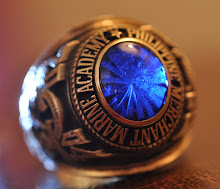Answer in Trivia of the month for May Bowline
Sunday, April 27, 2008
The bowline is an ancient but simple knot used to form a fixed loop at the end of a rope. The structure of the bowline is identical to that of the sheet bend, except in the bowline the end and the standing part are used to form the knot rather than two ends, as in the sheet bend.
The name has an earlier meaning, dating to the age of sail. On a square-rigged ship, a bowline (sometimes spelled as two words, bow line) is a rope that holds the edge of a square sail towards the bow of the ship and into the wind, preventing it from being taken aback. A ship is said to be on a "taut bowline" when these lines are made as taut as possible in order to sail close-hauled to the wind.
History
A very old knot, the bowline was first mentioned in John Smith's 1627 work, A Seaman's Grammar, though a "curiously intricate knot… akin to the bowline" was discovered on the rigging of the Ancient Egyptian Pharaoh Cheops's solar ship during an excavation.
Usage
The bowline is used mainly to make a temporary loop at the end of a line. Like the other similar knots, it can be made and then secured over an object like a post. Since the bowline is generally tied with the working end, it can be passed through a ring or other object before the knot is tied. This feature makes the Bowline a convenient and useful loop knot.
The bowline, or more commonly one of its variations such as the double bowline, is sometimes used by climbers to tie the end of the rope to a climbing harness, or the like. The advantage of the bowline in this application is that the knot is easy to untie even after it has been loaded. The disadvantage is that, while it is a very strong knot under load, it has a tendency to loosen up and become untied when it is unloaded and shaken around over a period of time, as might happen during a climb. Several other knots are more commonly used in modern climbing technique.
The bowline is commonly used in sailing small craft, for example to fasten a halyard to the head of a sail. The Federal Aviation Administration recommends the bowline knot for tying down light aircraft.
Tying
A mnemonic used to teach the tying of the bowline is to imagine the end of the rope as a rabbit, and where the knot will begin on the standing part, a tree trunk. First a loop is made near the end of the rope, which will act as the rabbit's hole. Then the "rabbit" comes up the hole, around and under the tree, and then back down the hole. When this configuration is tightened, a bowline has been tied.








0 comments: to “ Answer in Trivia of the month for May Bowline ”
Post a Comment